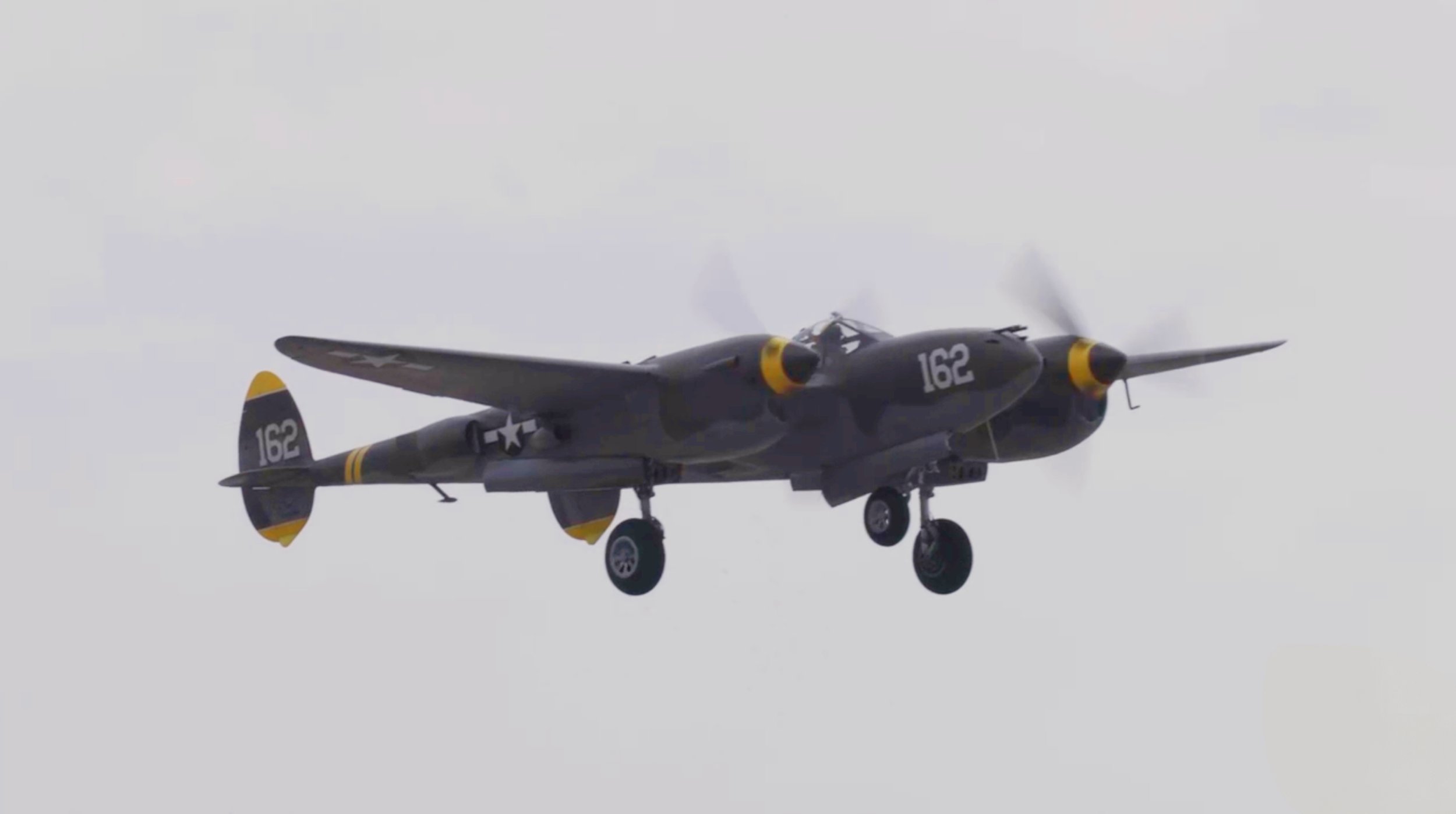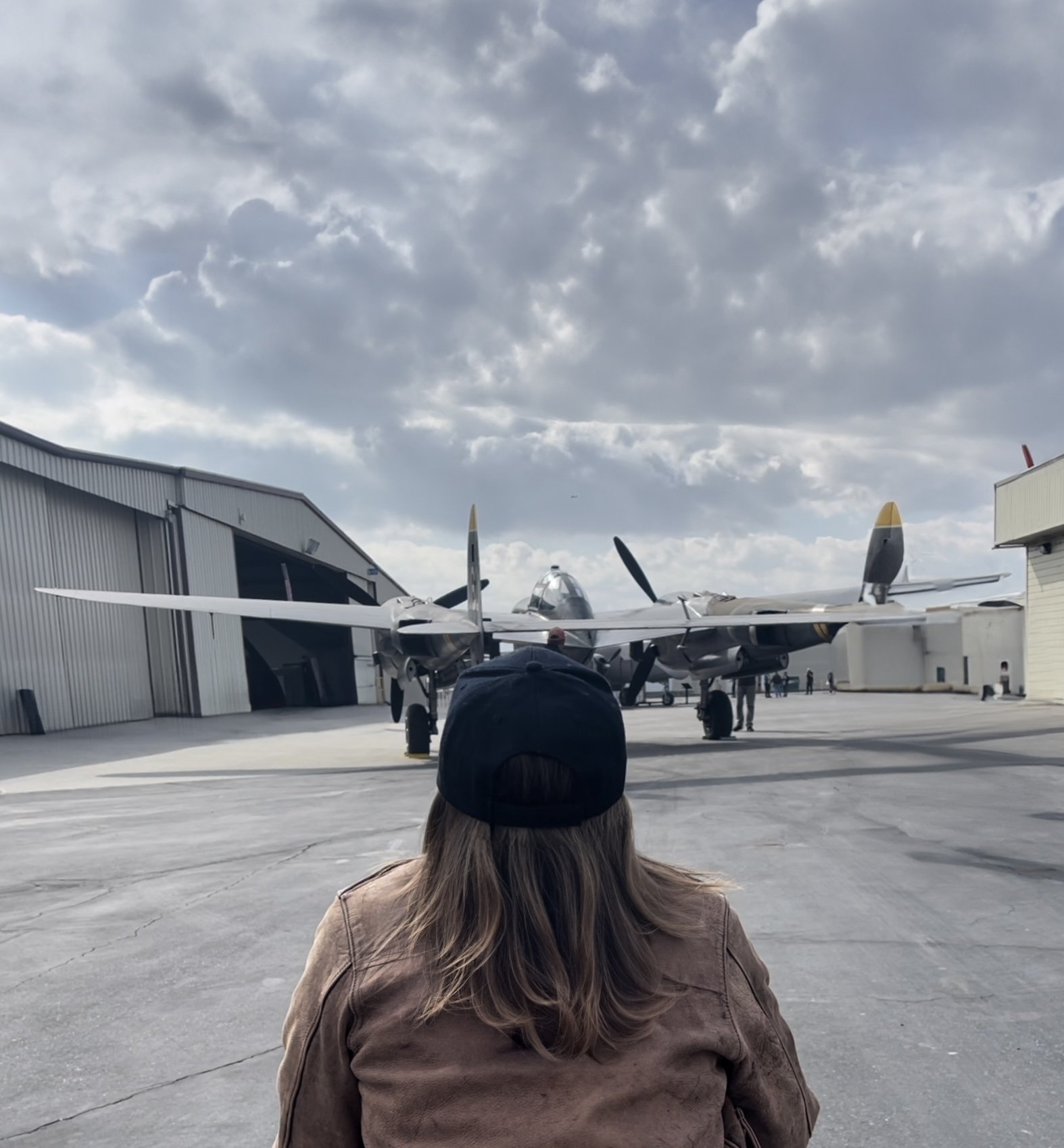Meeting the P-38 | Chino, CA
It’s one thing to grow up knowing your grandfather was a retired pilot. It’s another to discover he was a WWII fighter pilot—flying the P-38 Lockheed Lightning, a dual-engine machine so fierce and unforgettable it borders on myth. Long before he ever learned how to drive a car, he learned how to fly. That detail alone reshaped the way I saw him. But imagining what it must’ve been like for him up there—and then standing beside, and eventually sitting in, that very same kind of aircraft—took everything I thought I understood to an entirely new level.
The day we filmed at the Planes of Fame Museum in Chino, California, remains my favorite shoot to date. The P-38 Lightning—his plane—was on full display. Visitors moved slowly around it, wide-eyed, in awe. Later, we watched it take to the sky, piloted by U.S. Air Force veteran Chris Fahey (1983–1995). Seeing one of the few remaining flyable P-38s soar above us was nothing short of breathtaking. Just when we thought the moment had peaked, a second P-38 lifted off to join it in flight. The two planes moved together like a duet—powerful, precise, and almost poetic. Watching them fly in tandem, I couldn’t help but think of Jewboy and Super Yid—their friendship, their missions, their fight to stay alive and protect one another.
Theirs is a story of grit, wit, and unshakable loyalty—one we’re honored to bring to life in the upcoming documentary and feature film. If you haven’t heard of them yet, you will. Stay tuned.
Over a hundred people gathered to witness the flight. Their awe mirrored our own. And it struck me—how many others were deeply moved by this aircraft, this history, this legacy. Filming beside the plane, inside the cockpit, capturing every angle—it was a day layered in meaning.
Then came the moment I got to climb inside.
Sitting in that cockpit—where only a select few ever sit, most of them pilots—was humbling in the deepest, quietest way. The fit was snug. The visibility, more limited than I’d imagined. The exposure, the vulnerability—it was all there. It’s one thing to read about it or scroll through photos. It’s another to be in that space, to look out through the same narrow frames he once did, to wrap your hands around the very controls he once gripped. I felt shaky, quieted, and completely flooded with emotion. And the second my boots touched the ground again, I turned, looked back at the plane, and was completely overcome. The weight of it all hit me—how young he was, how brave, how impossibly composed he must’ve been. I’ve always admired him, but in that moment, my respect deepened into something even more sacred.
I’m 36 years old, sitting inside a war machine once flown by a Jewish kid in his early twenties—my grandfather—who wanted to be a musician. Before he was Goldie the fighter pilot, he was a kid with a French horn. And yet, somehow, that same kid found himself behind the controls of a plane surrounded by machine guns, navigating skies thick with danger. Holding all of that at once—it’s almost too much to comprehend.
And in that moment, all I wanted was for him to be there with me—to answer the questions I didn’t even know I had until I sat in his seat.
I’ve been filmed before—captured in passing, woven into the backdrop of family moments and unfolding storylines. But this documentary is different. For the first time, I’m not just being filmed—I’m stepping into the frame.
I’m usually behind the camera—directing, documenting, curating stories. But on this day, I flew to Chino from San Francisco early in the morning and returned home to my daughters that same evening—changed.
In just a few hours, I found myself inside something far greater than I’d expected. To be both a producer and a granddaughter on this project is a role I never saw coming—but deeply, wholeheartedly embrace. It’s a perspective I carry with me—one foot behind the lens, the other planted firmly in legacy—inviting others to witness and feel the story as it comes to life in real time.
This project is unforgettable. And that day? It wasn’t just a highlight of the documentary—it was a soul-marking, time-suspending kind of moment. The kind that etches itself into your chest and subtly rearranges you. Sitting in that P-38 didn’t just bring me closer to my grandfather—it connected me to a version of him I’d only imagined. And in doing so, it gave me something I hadn’t even realized I was missing.
We met extraordinary people—Mr. Fahey, the Planes of Fame team—and were granted access that will allow us to share this story with the care, depth, and heart it deserves. And I left with something even more valuable than footage: a renewed sense of awe for my grandfather—and a fire to keep honoring him, one frame at a time.
Onward!,
Lauren





